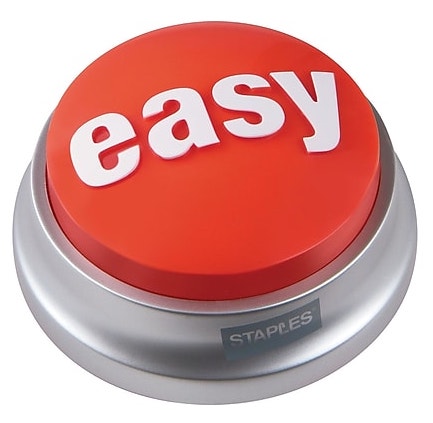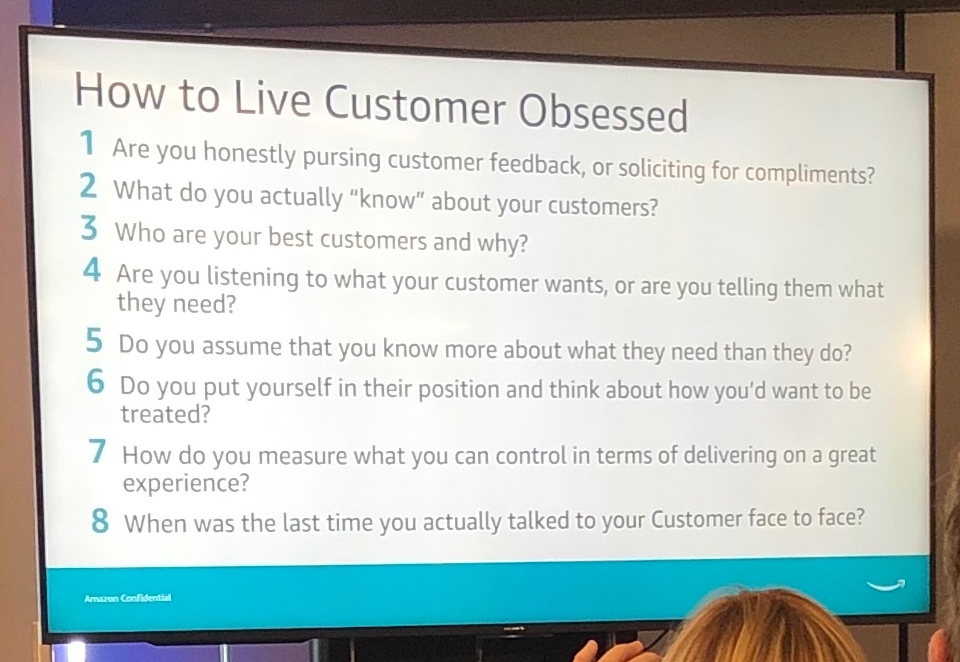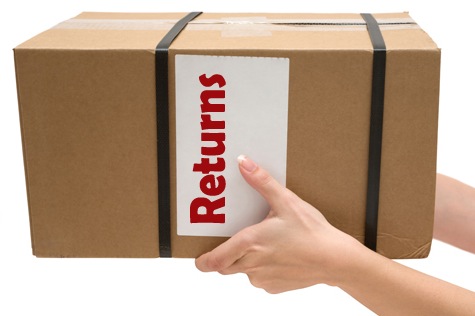We all dread receiving this email from Amazon:
“A return has been initiated for Order #…”
Returns are probably the most annoying and frustrating part of selling via Amazon FBA. You make a sale, you get the money added to your balance, then the customer changes their mind for some reason, and the money is taken back out of your account.
I’m not going to pretend like I enjoy getting returns any more than the next guy – but in this blog post I do want to try to look at the flip side of how frustrating Amazon returns are. I want to look at Amazon’s return policy from this angle:
Amazon has a fairly lenient return policy, and that policy is good for both buyers and sellers.
Yep, that’s right. I believe Amazon’s return policy is good for me as a seller.
Listen to the podcast version of this blog post:
If you need a refresher on what exactly Amazon includes in their return policy, you can click here to go directly to that Amazon web page. Here are the high points for why Amazon’s return policy works so well for buyers:
 The return policy is very easy.
The return policy is very easy.
In general, most Amazon categories have a similar return policy that the customer may return their item within 30 days for any reason and receive a full refund. It can’t get any simpler than that. It’s the easiest, most lenient return policy you can imagine. With just a few clicks on their computer, a customer can return the item, get a shipping label, and initiate their refund.
 The return policy is very flexible.
The return policy is very flexible.
Even though Amazon states their return window is 30 days, they’re pretty flexible about accepting returns that don’t fit in that window or don’t meet other aspects of their return policy. Every year during the holiday buying season, Amazon extends their return window even further to accommodate buyers who are shopping for holiday gifts.
It makes perfect sense that buyers love Amazon’s return policy for the above reasons – but I also think these reasons ultimately make the return policy a benefit for FBA sellers, too. I truly believe the return policy increases our overall sales on Amazon.
 When Rebecca and I attended the Amazon Selling Partner Summit in Seattle, the very first topic used to open up the summit was Amazon’s customer obsession. Amazon is obsessed with acquiring and maintaining their customers by doing everything possible to make those customers completely satisfied.
When Rebecca and I attended the Amazon Selling Partner Summit in Seattle, the very first topic used to open up the summit was Amazon’s customer obsession. Amazon is obsessed with acquiring and maintaining their customers by doing everything possible to make those customers completely satisfied.
Of course customer obsession would lead to a simple, flexible return policy! Customers are looking to buy items from a store they can trust to make it easy for them if they have a problem with the purchase they received or if they merely change their mind and no longer want the item.
In a recent speech, Jeff Bezos told listeners that the most important thing Amazon has accomplished in the past 20 years is to earn customer trust. Think about that for a moment. Earning customer trust is more important than creating Amazon Prime. It’s more important than creating the FBA warehouse system. It’s more important than creating the Kindle or Alexa.

Customer trust is of ultimate importance to the success of Amazon as a company. When customers trust you as a company, they will buy more from you and they will keep coming back to you. Amazon’s return policy is one component of creating deeper customer trust.
One thing I like to remind FBA sellers is that getting a higher number of returns usually means you’re getting a higher number of sales. This happens a lot in the weeks following the holiday season, when sellers experience peak Q4 sales. Suddenly they start receiving more returns than usual, and it freaks them out – but the truth is, their percentage of returns hasn’t changed, just the number of returns has increased in proportion to the number of items sold.
 Because customers trust that the return process for an item from an FBA seller will be easy, quick, and flexible, they buy more items from FBA sellers. When a customer receives a package from an FBA warehouse and opens it up, they are either happy because they like the item they receive, or they’re happy because they know the return process for the item will be simple. Either way, they’re going to be satisfied with how the process goes – that is Amazon’s goal. When the customer is satisfied at the end of that process, they’ll come back again and again to buy more items from Amazon – and from us as FBA sellers.
Because customers trust that the return process for an item from an FBA seller will be easy, quick, and flexible, they buy more items from FBA sellers. When a customer receives a package from an FBA warehouse and opens it up, they are either happy because they like the item they receive, or they’re happy because they know the return process for the item will be simple. Either way, they’re going to be satisfied with how the process goes – that is Amazon’s goal. When the customer is satisfied at the end of that process, they’ll come back again and again to buy more items from Amazon – and from us as FBA sellers.
Before we wrap up this post, I know many sellers have the question, “But what if Amazon gives the customer a refund from my account, but they never actually return the item back to the warehouse? How is that fair for me?” Be sure to check out this blog post to see how to handle this situation. The short answer is that you’ll get a reimbursement from Amazon after 45 days, so make sure you’re staying on top of those refunds and get your reimbursements.
Here are a couple more helpful blog posts about handling Amazon returns:
Steps to Take When You Get a Return
How to Handle Different Types of Returns
 Overall, we as FBA sellers should view returns as a normal part of doing business, and we need to work the cost of returns into our business budget and plan accordingly. One exception would be if you are receiving a high number of returns on one particular ASIN. If this is happening, you need to be sure you investigate the reason for these returns and figure out how you can improve the buying experience for customers and reduce those returns.
Overall, we as FBA sellers should view returns as a normal part of doing business, and we need to work the cost of returns into our business budget and plan accordingly. One exception would be if you are receiving a high number of returns on one particular ASIN. If this is happening, you need to be sure you investigate the reason for these returns and figure out how you can improve the buying experience for customers and reduce those returns.
Now, I’d love to hear what you think. In the comments below, let us know if you can see the positive aspects that Amazon’s return policy has on our businesses. As an Amazon customer, are you more likely to buy from Amazon knowing how good their return policy is? Let me know in the comments below.
![]()
 Imagine what it would feel like knowing you were not missing out on any of the opportunities that will come your way this year. Imagine working on your Amazon business knowing exactly what your priorities are, what you need to avoid, and what you need to accomplish during each month to make progress toward making this year your best sales year ever.
Imagine what it would feel like knowing you were not missing out on any of the opportunities that will come your way this year. Imagine working on your Amazon business knowing exactly what your priorities are, what you need to avoid, and what you need to accomplish during each month to make progress toward making this year your best sales year ever.
This can all be true with the help of our course The Reseller’s Guide to a Year in FBA: A Month by Month Guide to a Profitable Amazon Business. The package includes a 220+ page ebook, live training videos throughout the year, and 4 special bonuses.

Hi Stephen!
I really enjoyed your article on RA. I recently started sourcing some items but it’s dizzying the steps in doing fba. I would really love to pick your brain as I am recently married and in a wheelchair and definitely have some unique circumstances. Im trying to balance all of this with a PT job, being a husband, active in my church etc. I’d love to know somethings I can do to set myself up to succeed. My wife is definitely suspicious of the RA business model.
How long have you been selling on Amazon? If you want to know how to best set yourself up for success on Amazon, I recommend this course: https://www.fulltimefba.com/jumpstart. If you’re already good with the foundational stuff, then I recommend this course that will help you finally go full-time with Amazon: https://www.fulltimefba.com/nextlevel.
hi Stephen, while j am happy with customer returns I am very unhappy about the increasing number of customer damaged returns which end up as unsellable inventory and amazon expects me to pay for and have them removed or disposed off as a cost to me. Also for customer returns that actually don’t get returned but refunded amazon reimburses me a pittance sometimes 1% of the sale price as they must think that their sellers buy their items for pennies and are selling the items for a killing on their platform, atleast in the UK. Amazon UK does not understand the part that the sellers have played in making them the trillion dollar company they are today and their policies are based on the model amazon (always win) – buyer (wins always) – seller (loses always). atleast that is my experience.
1. The term “customer damaged” does not mean that they break the item, but that they have opened the item from its original packaging. EVERY retail store (including Amazon 3rd party sellers) has this as part of their business model. When buying items you have to make sure you work this possible cost into your ROI in order to be successful selling items online. Every store deals with this issue. Some stores donate their “damaged” goods, some stores try to sell at a clearance price and mark what is wrong with the item and sell it in used/collectible conditions. It’s just to be expected, so just work it into your business model. Remember, the more returns you get is because of the increased sales you’re getting. In the end, those who work returns into their business model are going to end up on top.
2. For Amazon not reimbursing you what you think is fair, we have a blog post on how to handle this exact situation and get more funds reimbursed to you. Here is the link: https://www.fulltimefba.com/how-to-handle-unfair-amazon-reimbursements/
3. The seller does not always lose. Hundreds of thousands of sellers are winning every day. If you see yourself always losing then you need to either change how you’re running your Amazon business or decide to do something else with your time.
I hope this helps. I wish you all the best.
My first returns were soul crushing. I sent in a number of the same item with great ROI, great rank, and little competition. When they started selling, I got 2 returns very shortly after. I thought maybe I messed up sending these in and all that money I made would be taken away.
Turns out, one was damaged at some point during shipping and the other was fine and able to be sent back out and sold. I think that initial freak out moment was good because it taught me that returns happen and it’s not the end of the world. Now when I see the email, I just know it’s the cost of doing business and there’s still potential for the item to be sold. And if it’s not, then it’s a reminder to me to check my items thoroughly before sending them out.
Glad to hear you have the right perspective now. Yes, the first few returns can be crushing, but once we work it into our business model, we can not only survive, but thrive! I wish you all the best!
“Customer Damaged” is also the opinion of a warehouse person working at light speed. One of my items was “Customer Damaged” and I had it sent back to me. It was literally in the same exact condition I sent it out in. I sent it back out in my next shipment and it sold (for more actually) and no return.
On a non-shoe or a non-clothing item, when a customer returns an item, Amazon asks the customer if they opened the item. If the customer says yes, then it’s automatically marked as “Customer Damaged” and the warehouse worker usually does not even look at the item to double check – especially if you don’t have the “repackage returned item” settings turned on in your account settings. You’re right that the Amazon worker, who is working as fast as they can, will not do a deep check on the condition of the items, but there are other things in play in this situation as well. In my experience, almost all of my returns can be sold again (sometime in new condition, but usually in used/collectible condition) and I can get some of my capital back.
I think Amazon’s return policy has done a fabulous job of training customers that they can get whatever they want. They can declare something defective so they don’t have to pay return shipping. I pay to have it sent back to me at my expense, and 98% if the time it is not defective at all. So then I have to pay to send it back in for sale. I got a return notice last week for an item I haven’t sold in over TWO YEARS. Many customers know they can get whatever they want and take full advantage. Amazon’s customer obsession comes at the expense of 3rd party sellers.
Customer’s who abuse the return policy are extremely rare. And the increase in sales from the customers who don’t abuse the policy is well worth the few bad apples who try to take advantage of the system. And in these cases of customer abuse, you can report this to Amazon. Amazon WANTS to know when customers abuse their return policy and want us sellers to notify them. They get “dings” on their accounts and too many dings cause a customer’s account to be suspended. Plus, Amazon can track IP addresses so they can’t just open up a new account with a new email. Again, if you experience customer abuse, then contact Amazon. They want to know and want to remove those who abuse the return policy. They won’t know unless we tell them.